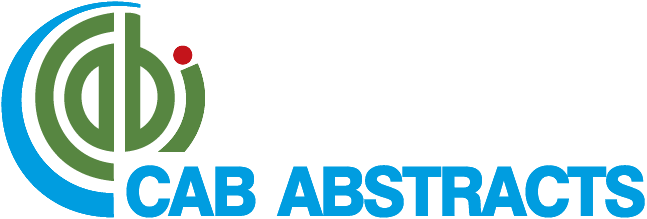Anaphylactic shock: a review of the pathophysiology and therapeutic management
DOI:
https://doi.org/10.62486/agodonto2025199Keywords:
shock, anaphylaxis, treatment, first aid, allergyAbstract
Introduction: Anaphylactic shock is a severe allergic reaction that can occur rapidly and be life-threatening. Understanding it is crucial for medical care, especially in settings where medications are administered or procedures are performed that can trigger allergic reactions.
Objective: To review the etiological, pathophysiological, clinical, and therapeutic features of anaphylactic shock.
Development: The most common causes of anaphylactic shock include allergies to food, insect stings, medications, and latex. Pathophysiologically, it is characterized by massive release of inflammatory mediators such as histamine, leading to vasodilation, increased vascular permeability, and bronchoconstriction. Clinically, it presents with symptoms such as urticaria, edema, respiratory distress, and hypotension. Diagnosis is based on clinical history and symptom presentation. Immediate treatment includes the administration of adrenaline, which acts as a vasoconstrictor and bronchodilator, and may be followed by antihistamines and corticosteroids.
Conclusions: Anaphylactic shock is a medical emergency that requires immediate recognition and treatment. Education and preparation of medical personnel are essential to ensure an appropriate response to this condition. Early identification of triggers can prevent future episodes and improve patient outcomes.
References
Brown AF. Anaphylactic shock: mechanisms and treatment. Emergency Medicine Journal [Internet] 1995 [cited 2024 Sep 26];12(2):89–100. Disponible en: https://emj.bmj.com/content/12/2/89
Johnson RF, Peebles RS. Anaphylactic Shock: Pathophysiology, Recognition, and Treatment. Seminars in Respiratory and Critical Care Medicine [Internet] 2004 [cited 2024 Sep 26];25:695–703. Disponible en: https://www.thieme-connect.com/products/ejournals/abstract/10.1055/s-2004-860983
Barach EM, Nowak RM, Lee TG, Tomlanovich MC. Epinephrine for Treatment of Anaphylactic Shock. JAMA [Internet] 1984 [cited 2024 Sep 26];251(16):2118–2122. Disponible en: https://doi.org/10.1001/jama.1984.03340400046024
Espinoza DB. Nivel de conocimiento sobre shock anafiláctico en los estudiantes que llevan clínica del adulto en la Universidad Alas Peruanas filial Huacho periodo agosto - diciembre 2016 [Internet]. 2018 [cited 2024 Sep 25];Disponible en: https://repositorio.uap.edu.pe/xmlui/handle/20.500.12990/3432
McLendon K, Sternard BT. Anaphylaxis [Internet]. In: StatPearls [Internet]. StatPearls Publishing, 2023 [cited 2024 Sep 26]; Disponible en: https://www.ncbi.nlm.nih.gov/books/NBK482124/
Brown SGA. The Pathophysiology of Shock in Anaphylaxis. Immunology and Allergy Clinics of North America [Internet] 2007 [cited 2024 Sep 26];27(2):165–175. Disponible en: https://www.sciencedirect.com/science/article/pii/S0889856107000252
Espinosa Rosales FJ. Inmunopatología de la infección por virus SARS-CoV-2. Acta Pediatr Mex [Internet] 2020 [cited 2024 Jan 18];41(4S1):42. Disponible en: https://ojs.actapediatrica.org.mx/index.php/APM/article/view/2070
Muraro A, Worm M, Alviani C, et al. EAACI guidelines: Anaphylaxis (2021 update). Allergy [Internet] 2022 [cited 2024 Sep 27];77(2):357–377. Disponible en: https://onlinelibrary.wiley.com/doi/abs/10.1111/all.15032
Soar J, Pumphrey R, Cant A, et al. Emergency treatment of anaphylactic reactions—Guidelines for healthcare providers. Resuscitation [Internet] 2008 [cited 2024 Sep 27];77(2):157–169. Disponible en: https://www.sciencedirect.com/science/article/pii/S0300957208000701
Zarisfi F, Pek JH, Oh JHH, Loke JH, Lim SH. Singapore First Aid Guidelines 2021. Singapore Med J [Internet] 2021 [cited 2024 Sep 27];62(8):427–432. Disponible en: https://www.ncbi.nlm.nih.gov/pmc/articles/PMC8804485/
Dodd A, Hughes A, Sargant N, Whyte AF, Soar J, Turner PJ. Evidence update for the treatment of anaphylaxis. Resuscitation [Internet] 2021 [cited 2024 Sep 27];163:86–96. Disponible en: https://www.sciencedirect.com/science/article/pii/S0300957221001507
Simons FER, Ardusso LRF, Bilò MB, et al. World Allergy Organization anaphylaxis guidelines: Summary. Journal of Allergy and Clinical Immunology [Internet] 2011 [cited 2024 Sep 27];127(3):587-593.e22. Disponible en: https://www.jacionline.org/article/S0091-6749(11)00128-X/fulltext
Simons FER. Epinephrine (adrenaline) in the First-Aid, Out-Of-Hospital Treatment of Anaphylaxis [Internet]. In: Anaphylaxis. John Wiley & Sons, Ltd, 2004 [cited 2024 Sep 27]; p. 228–247.Disponible en: https://onlinelibrary.wiley.com/doi/abs/10.1002/0470861193.ch19
Poziomkowska-Gęsicka I, Kurek M. Clinical Manifestations and Causes of Anaphylaxis. Analysis of 382 Cases from the Anaphylaxis Registry in West Pomerania Province in Poland. International Journal of Environmental Research and Public Health [Internet] 2020 [cited 2024 Sep 27];17(8):2787. Disponible en: https://www.mdpi.com/1660-4601/17/8/2787
Whyte AF, Soar J, Dodd A, Hughes A, Sargant N, Turner PJ. Emergency treatment of anaphylaxis: concise clinical guidance. Clinical Medicine [Internet] 2022 [cited 2024 Sep 27];22(4):332–339. Disponible en: https://www.sciencedirect.com/science/article/pii/S1470211824029361
Zieliński M, Kominek M, Motylewski B, Skalski D. ANAPHYLAXIS AND ANAPHYLACTIC SHOCK. Rehabilitation and Recreation [Internet] 2019 [cited 2024 Sep 27];(5). Disponible en: https://health.nuwm.edu.ua/index.php/Rehabilitation/article/view/84
Sicherer SH, Simons FER, SECTION ON ALLERGY AND IMMUNOLOGY, et al. Epinephrine for First-aid Management of Anaphylaxis. Pediatrics [Internet] 2017 [cited 2024 Sep 27];139(3):e20164006. Disponible en: https://doi.org/10.1542/peds.2016-4006
Published
Issue
Section
License
Copyright (c) 2025 Antonella De María, Sergio Verdú, Atilio Vela Ferreira, Gustavo Zunini, Elizabeth Baggini, Maria Isabel Brusca (Author)

This work is licensed under a Creative Commons Attribution 4.0 International License.
The article is distributed under the Creative Commons Attribution 4.0 License. Unless otherwise stated, associated published material is distributed under the same licence.





